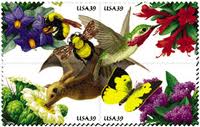Widespread reports of low pollination rates suggest a recent anthropogenic decline in pollination that could threaten natural and agricultural ecosystems. Nevertheless, unequivocal evidence for a decline in pollination over time has remained elusive because it was not possible to determine historical pollination rates. Here we demonstrate a widely applicable method for reconstructing historical pollination rates, thus allowing comparison with contemporary rates from the same sites. We focused on the relationship between the oil-collecting bee Rediviva peringueyi (Melittidae) and the guild of oil-secreting orchid species (Coryciinae) that depends on it for pollination. The guild is distributed across the highly transformed and fragmented lowlands of the Cape Region of South Africa.
We show that rehydrated herbarium specimens of Pterygodium catholicum, the most abundant member of the guild, contain a record of past pollinator activity in the form of pollinarium removal rates. Analysis of a pollination time series showed a recent decline in pollination on Signal Hill, a small urban conservation area. The same herbaria contain historical species occurrence data. We analyzed this data and found that there has been a contemporaneous shift in orchid guild composition in urban areas due to the local extirpation of the non-clonal species, consistent with their greater dependence on seeds and pollination for population persistence.
Source: Anton Pauw, Julie A. Hawkins (2011). Oikos 120(3):344-349
http://onlinelibrary.wiley.com/doi/10.1111/j.1600-0706.2010.19039.x/full

- Log in to post comments
